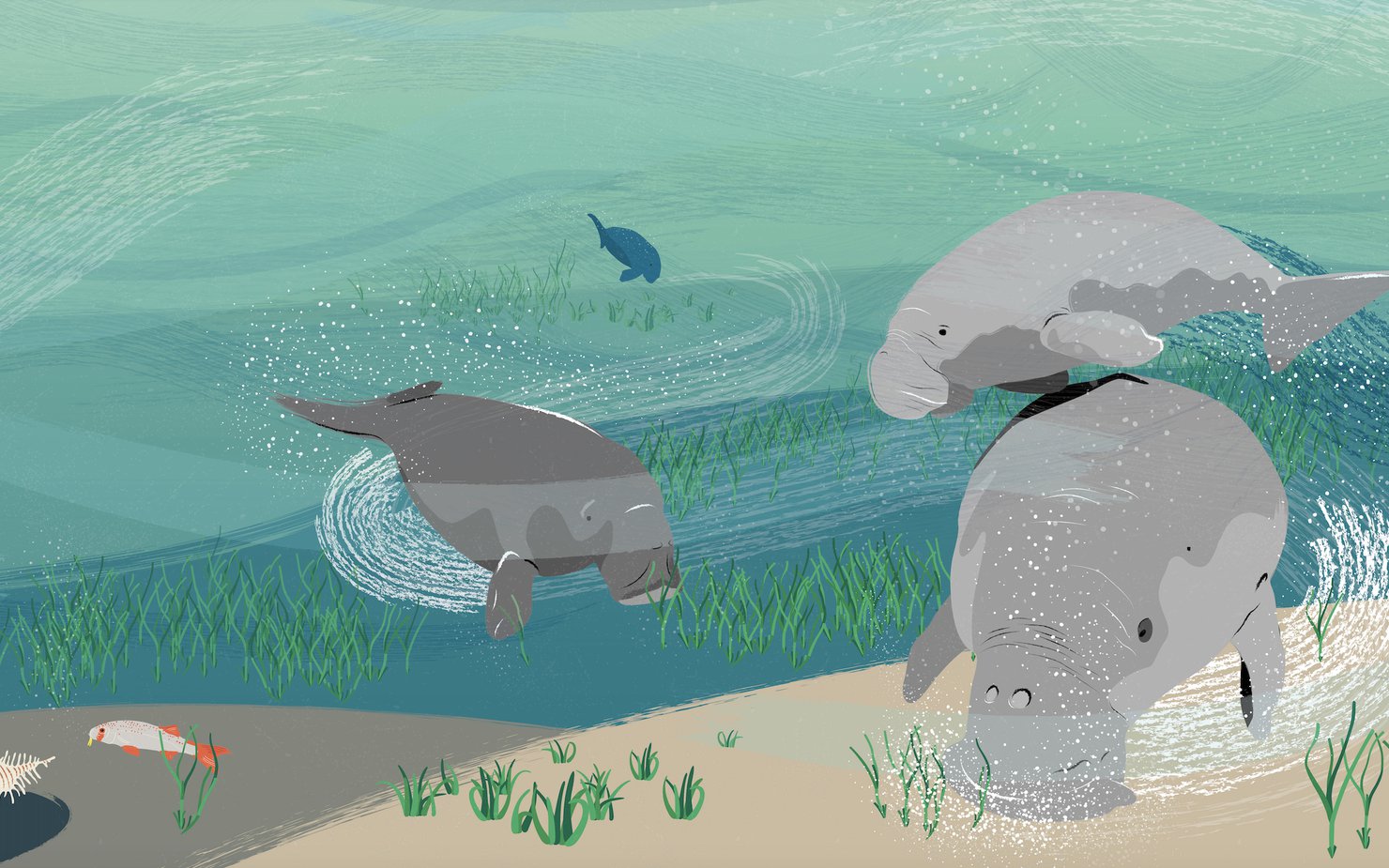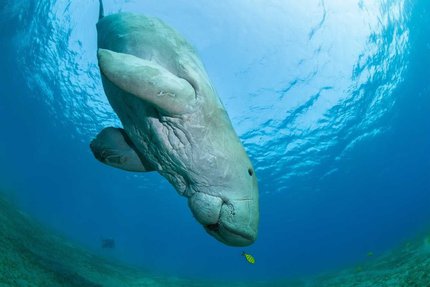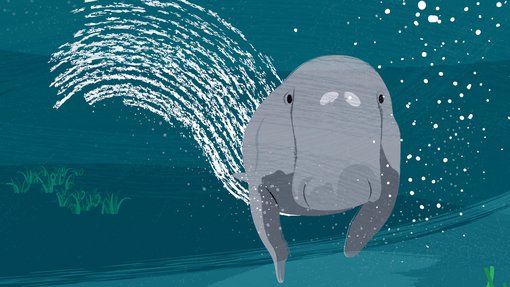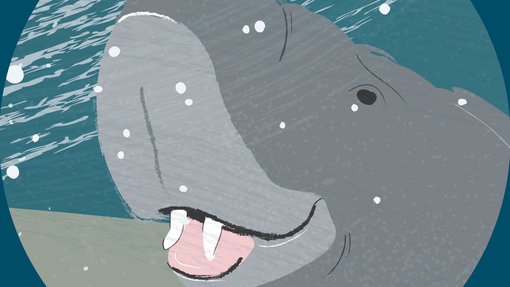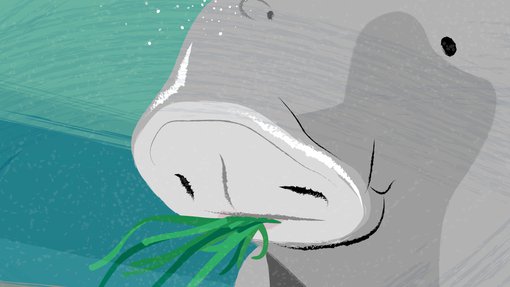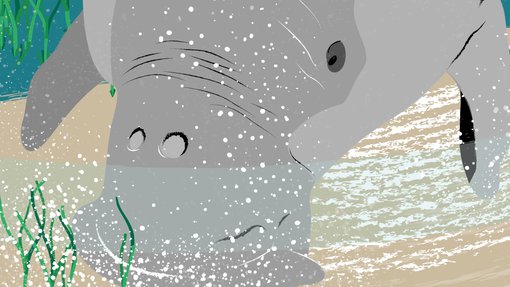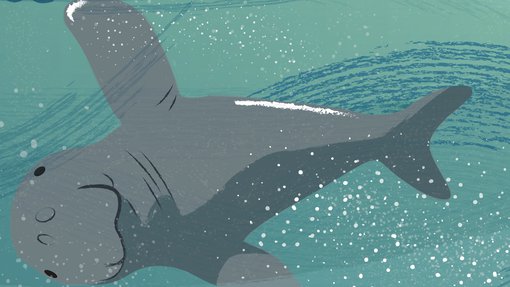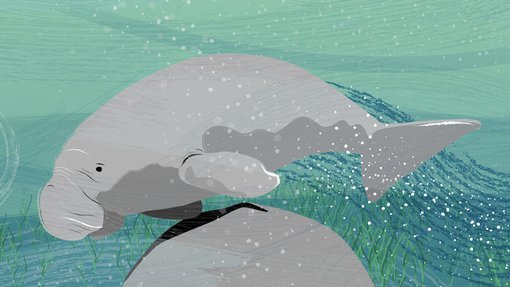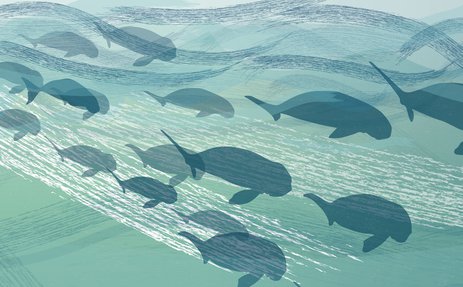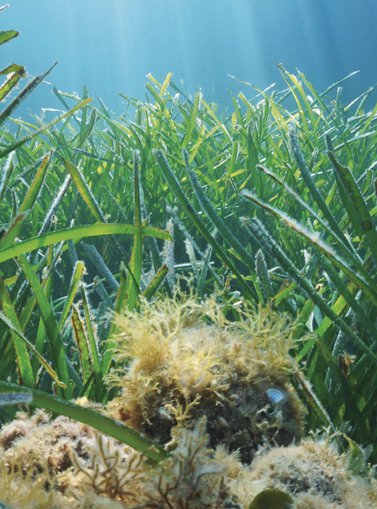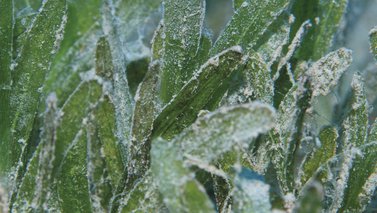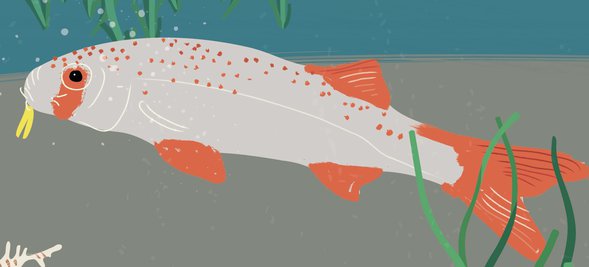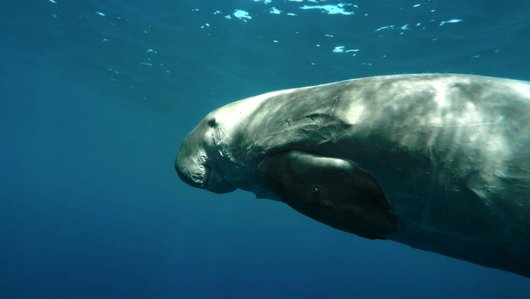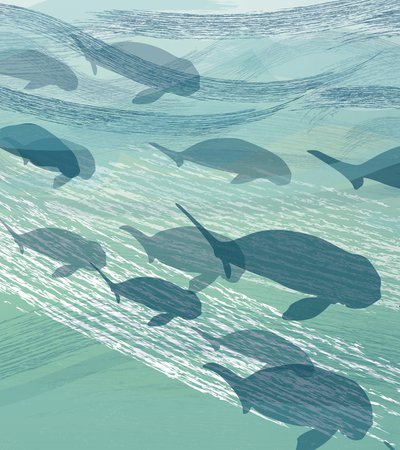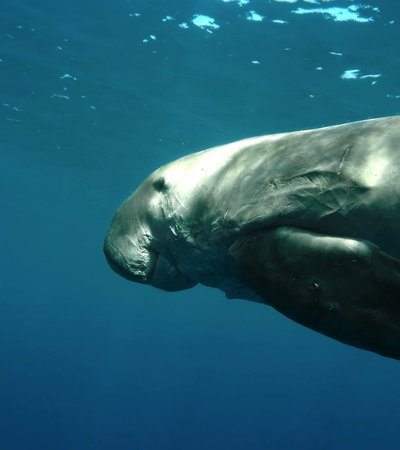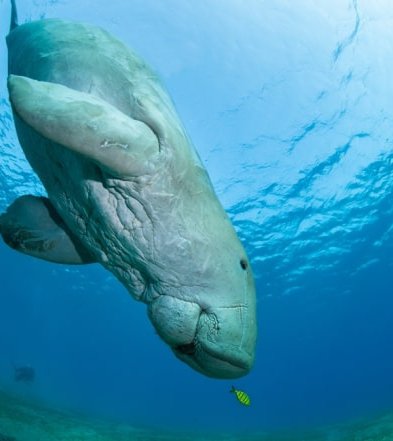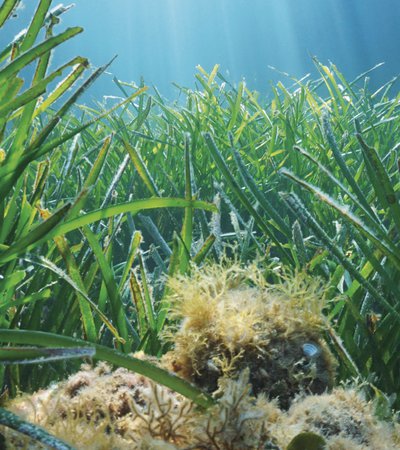Observing Dugongs' Behaviour
Like many other animals, dugongs have their own unique habits and behaviours. Dugongs live a semi-nomadic life: as calves with their mother and as grown-ups alone. Throughout their lives, they spend their time eating seagrass.
Scientists study their behaviour through observation. Still, we have limited information, as they can be very shy.
Raising Calves
Dugongs and their calves share an intimate bond. Mothers usually give birth to one calf every three to six years. Calves grow up with their mother until they are about two years old, when they are mature enough to be on their own.
Mothers and calves communicate through touch. They touch each other’s flippers or rub their noses for reassurance. Calves climb on their mother’s back or swim underneath her for protection.
Eating Day and Night
Eating is the dugongs’ main activity! Dugongs eat seagrass found in shallow, clear, warm waters. Once they reach for their food, they use their muscular snouts and bristles to dig up the roots and pull the seagrass from the sea floor.
The fact that dugongs feed on seagrass is part of the seagrass meadow’s lifecycle.
In the short run, intense eating allows the seagrass to grow, which creates new habitat and nurseries for other inhabitants. In the long run, stirring up the sand and removing plants recycles nutrients and lets energy flow. This helps meadows develop and host more fish.
Dugongs eat around 40kg of seagrass per day.
How much food is 40kg? That's around 800 eggs or 180 burgers in weight! Although these numbers are mind-blowing, remember, seagrass is not as nutritious as our food. Dugongs have to eat this much to sustain themselves.
However, they prefer seagrass, which is more nutritious and is easy to digest. This means that they give priority to quality and not to quantity.
